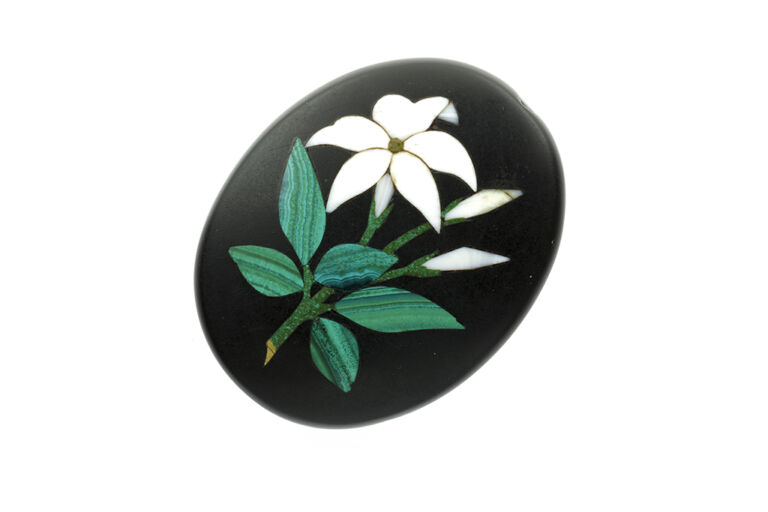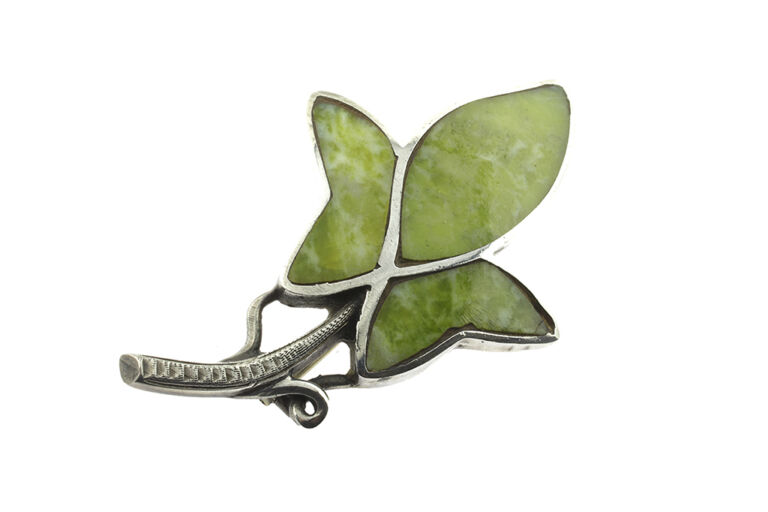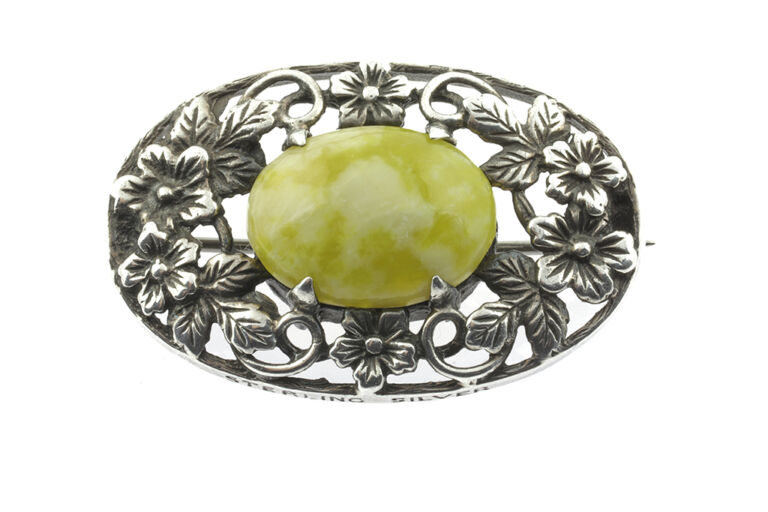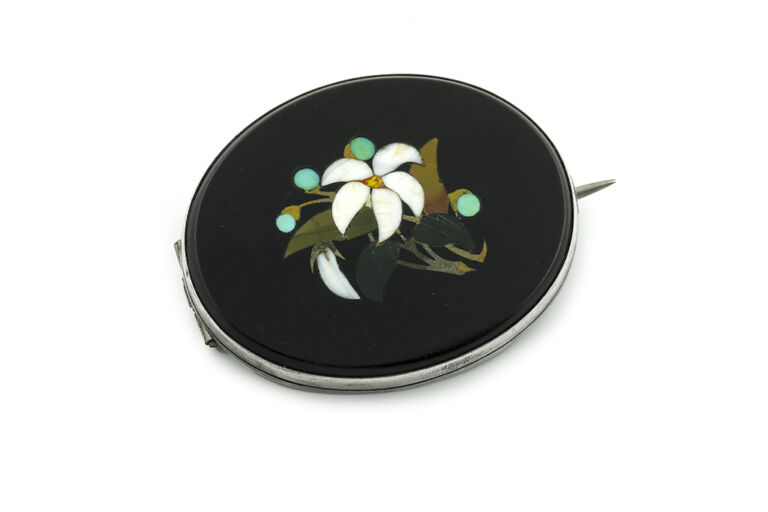

£195.00
Reference: SJ-AGATE-BH-19
A hardstone intarsia brooch, composed of black marble and inlaid with malachite, jasper and shell to replicate the appearance of a jasmine flower study.
Secured with a pin and 'C' hook fitting.
Circa: 1850-1880.
The Italian word commesso, deriving from the Latin committere (to join together), is used to describe a type of mosaic executed in coloured marble, pietre dure (hardstones), and pietre tenere (softstones). The sophisticated artistic taste of late Mannerist Florence and the richness and splendour of the Grand Ducal Medici court created the ideal conditions for the development of elaborate commesso works composed of semiprecious stone pieces fitting perfectly together like wood marquetry, but not fixed to a ground or base. The origin of Florentine mosaics is to be found in two different technical predecessors: pietre tenere mosaics made in Rome, and Milanese hardstone sculpture.
(Hardstones, The Gilbert Collection, by Anna Maria Massinelli, 2000).
These brilliantly virtuoso works were made from cut and polished stones, carefully selected for colour and texture and assembled into sophisticated pictures or geometric designs. The materials for the finest work in this technique were much more costly than the thread-like opaque glass rods used for micromosaics. The medium was also arguably a more potent vehicle for artistic expression.
Redolent examples include a faux locket illustrated in Jewellery 1789-1910: The International Era Volume 1, 1789-1861 (by Shirley Bury, 1991, Antique Collectors Club, page 234) and a suite illustrated in Jewellery in the Age of Queen Victoria, A Mirror to the World (by Charlotte Gere and Judy Rudoe, 2010, The British Museum Press, page 505).
This product is characteristic of the private workshops of Florence in the late nineteenth century. They produced a constant supply of jewellery, such as brooches, earrings, and pendants decorated with simple inlaid hardstones. Jewellery of this type was also produced by the Opificio delle Pietre Dure, where examples can still be seen.
Mrs Jameson’s comments in Diary of an Ennuyée, London, 1826, p.104, highlights the esteem in which the local pietra dura work was held, although her view is none too complimentary: ‘At the Pietra Dura, notwithstanding the beauty and durability of some of the objects manufactured, the results seemed to me scarce worth the incredible time, patience and labour required in the work. Par exemple, six months’ hard labour spent upon a butterfly in the lid of a snuffbox seems a most disproportionate waste of time. Thirty workmen are employed here at the Grand Duke’s expense; for this manufacture, like the Gobelins at Paris, is exclusively carried out for the sovereign’.

Select this product to find out more.

Select this product to find out more.

Composed of Ashford marble, turquoise, jasper & white shell. Sentimental Floral design of jasmine & forget-me-not.
We are happy to reserve this item for your viewing in our Wells store. Please leave us your details and availability below and let us handle the rest.